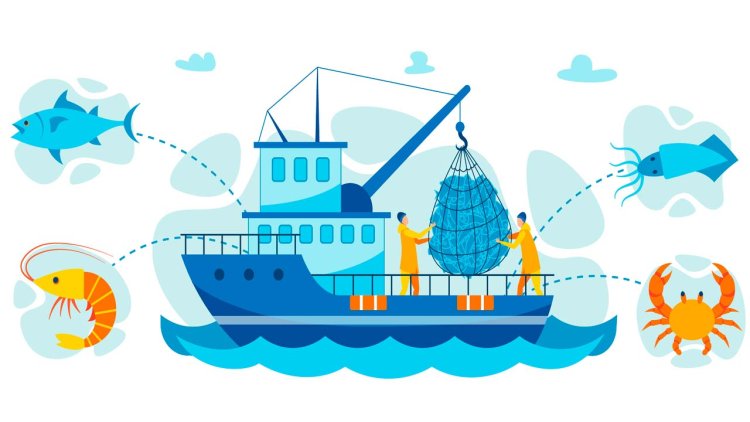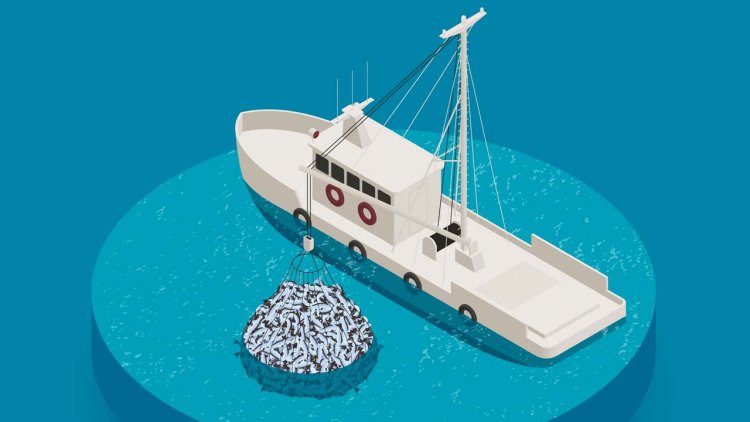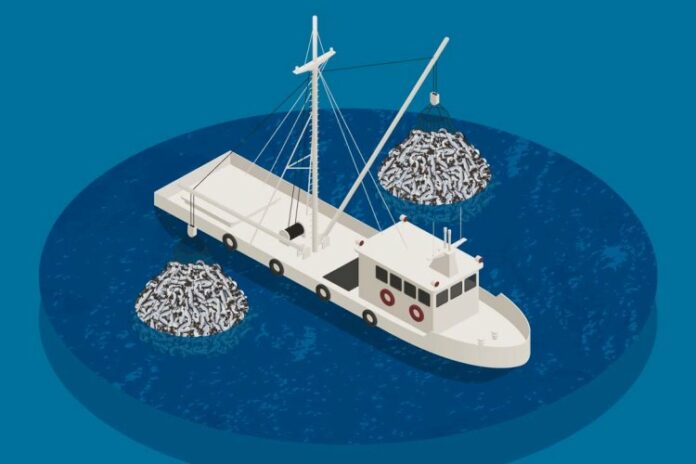Bottom trawling, or the use of heavy nets to scrape the ocean floor for fish, has a detrimental effect on sea life and marine ecosystems. Despite that, the practice still provides over a quarter of fishery catches worldwide.
Now, a landmark new study published in the journal Frontiers in Marine Science has found that bottom trawling is responsible for feeding up to 370 million metric tons of carbon dioxide into the atmosphere every year, making the practice destructive for both ocean life and the climate.
Bottom trawling occurring between 1996 and 2020 contributed 0.97 parts per million to atmospheric CO2, according to the paper. If it continues as is, the authors predict it will add an additional 0.2-0.5ppm of CO2 by 2030. For context, the growth rate of carbon dioxide in the atmosphere currently increases on average by about 2.4ppm per year, according to the 2023 Global Carbon Budget report.
That may be just a modest portion of overall emissions, but experts say even small reductions can help fight climate change.

“Global warming is like death by a thousand cuts. It’s lots of different sources producing CO2 emissions,” said Enric Sala, a marine ecologist, National Geographic Explorer-in-Residence and one of the authors of the new study. “Bottom trawling emissions are small compared to the emissions produced by burning fossil fuels on the land, but everything, everything counts.”
To curtail this destructive practice, consumers might be tempted to go out of their way to avoid fish caught with bottom trawling gear at the grocery store, but Sala adds that, with the exception of a few concerted cases, this may not end up making a difference. Rather, he argues, the focus should be on getting protected areas to fully restrict the fishing technique.
“What makes the most sense would be to ban bottom trawling in marine protected areas,” said Sala. “Let’s start with that.”
Between 55 and 60 percent of emissions produced from bottom trawling underwater is released into the atmosphere within an average of nine years, while the remaining CO2 can create more acidic conditions where it’s released, per their results. At roughly 370 million metric tons of CO2, the estimated yearly fraction of carbon dioxide emitted to the atmosphere by trawling is nearly double the annual emissions from fuel combustion for the entire global fishing fleet.
“This helps countries understand that this industry can, and is, emitting CO2,” said Trisha Atwood, an associate professor at Utah State University and lead author. “That they have the potential to mitigate that, by better managing how fishing is done and where fishing is done.”
Trawling the seafloor for fish typically involves the use of metal “doors” that can each weigh over 11,000 pounds, used to navigate and hold weighted nets at the intended location—which can span over 600 feet. This practice can rip up sediment and destroy natural habitats by causing physical disturbances on the seabed that have been compared to forest clearcutting.
This widespread fishing practice emits the most emissions in the East China Sea, the Baltic Sea, the North Sea, and the Greenland Sea, according to the new paper. It also identifies the South China Sea, the Norwegian Sea, and the Pacific coast of Japan as areas where the authors see more trawling-induced CO2 released to the atmosphere than expected, based on local trawling activity.
Using past research on carbon storage potential, fishing data tracking where bottom trawling occurred, and ocean circulation models, the researchers estimated how much CO2 trawling pumped into the atmosphere between 1996 and 2020. They then modeled two possible future scenarios, one where all bottom trawling stops in 2030 and another where all trawling stops in 2070.
“The CO2 that is produced by trawling elsewhere does move in the ocean. It doesn’t come up right where you trawl, necessarily,” explained Atwood, describing the “shocking” phenomena, where trawling in one place is actually causing CO2 to be emitted in another, as a “neighbor” effect.
A 2021 paper she co-authored with Sala was the first to quantify the possible release of carbon into the ocean from bottom trawling, which they say prompted this research.

Some argue that the call for action issued by these new findings should be more assertive.
Consumers in the European Union should be able to identify whether or not the fish they’re considering buying at the supermarket has been procured through trawling, as the EU mandates sources of unprocessed fish be labeled with the type of fishing gear used for the catch. However, compliance with those regulations varies among products and countries.
In the U.S., no such regulations exist, although bottom trawling is prohibited in over half of U.S. federal waters and the gear used to trawl is prohibited in more than a third, per a 2023 U.S. Fishery Management Council report.
But Sala views “putting the onus on consumers” as a “typical tactic used by industry to deflect responsibility.” He says that despite consumer choice being “hailed” as a solution to reducing overfishing, not enough people change their eating behavior to make much of an impact. Instead, he’d rather see trawling banned in marine protected areas, where the fishing practice is still largely permitted.
Source: National Geographic



